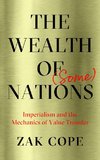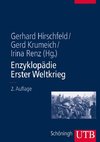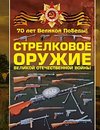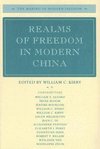
-
 Anglický jazyk
Anglický jazyk
Muhajir communities
Source: Wikipedia. Pages: 167. Chapters: Punjabi Rajput, Khanzada, Mughal, Dawoodi Bohra, Ranghar, Meo, Muslim Kamboh, Rohilla, Chhipa, Pathans of Uttar Pradesh, Sulaymani, Mappila, Gujarati Muslims, Hyderabadi Muslims, Tamil Muslim, Memon people, Pathans... Viac o knihe
Na objednávku, dodanie 2-4 týždne
32.30 €
bežná cena: 36.70 €
O knihe
Source: Wikipedia. Pages: 167. Chapters: Punjabi Rajput, Khanzada, Mughal, Dawoodi Bohra, Ranghar, Meo, Muslim Kamboh, Rohilla, Chhipa, Pathans of Uttar Pradesh, Sulaymani, Mappila, Gujarati Muslims, Hyderabadi Muslims, Tamil Muslim, Memon people, Pathans of Gujarat, Muhajir people, Sayyid, Mirasi, Surti Muslims, Shaikh of Uttar Pradesh, Siddis of Karnataka, Momin Ansari, Oriya Muslims, Muslims of Manipur, Qassab, Shaikh of Bihar, Khoja, Siddiqui, Muslim Dhobi, Stranded Pakistanis, Sayyid of Uttar Pradesh, Ghosi, Baluch, Muslim Teli, Muslim Tyagi, Nawayath, Pangal, Muslim Kayasths, Sunar, Malik, Muslim Rangrez, Muslim Gaddi, Syeds Naqvi, Baghban, Bhishti, Rayeen, Vora Patel, Darzi, Zaidi, Hajjam, Manihar, Rizvi, Punjabi Saudagaran-e-Delhi, Behna, Sunni Bohra, Malkana, Bhadala, Gujarati Shaikh, Bisati, Bhatiara, Saadat-e-Bara, Arain, Bihari Muslims, Atishbaz, Sheikh, Saifi, Lalkhani, Khumra, Silawat, Qidwai, Ghanchi, Shaikhzada, Rath, Muslim Raibhat, Jafri, Farooqi, Pathans of Rajasthan, Ramaiya, Kunjra, Turk Jamat, Sadaat-e-Bilgram, Pinjara, Sadaat Amroha, Nagar Muslims, Thangal, Tai, Chakee, Abidi, Attarwala, Shaikh of Rajasthan, Kutchi Memon, Osmani, Nanbai, Konkani Muslims, Zamindara, Singiwala, Shershahabadia, Nagori, Alavi Bohra, Kazmi, Khadim, Sorgar, Salaat, Dafer, Kasgar, Ghanchi-Pinjara, Sait, Okhai, Veraval Turk Jamaat, Patani Bohras, Hiranbaz, Thulukkar, Hela Mehtar, Bantva Memons, Ja'fri. Excerpt: Rajputs during the medieval period were a dominant caste in Northwestern India, including the Punjab region. As a forward caste, Rajputs have not been counted as a caste in the official census in the Republic of India since 1940. According to the 1911 census in British India, the total Rajput population in the Punjab was 1,635,578, of which 1,222,024 (74.5%) were Muslim, 388,744 (24%) were Hindu and (24,810) (1.5%) were Sikh. Traditionally, in the plains of Punjab, most of the Rajput clans had converted to Islam and some Rajput villages in the Punjab Region converted, wholly or partially, to Sikhism. The extent of conversion depended on the influence of Sikhism in that region. The Rajput clans of Punjab hills (modern Himachal Pradesh and Gurdaspur and Hoshiarpur districts) remained Hindu. Punjab (British India), 1909Punjab region straddling the border between India and Pakistan. The "Five Rivers" are the Beas, the Ravi, the Sutlej, the Chenab and the Jhelum. All are tributaries of the Indus river, the Jhelum being the largest. Punjab has a long history and rich cultural heritage. The people of the Punjab are called Punjabis and their language is also called Punjabi. The main religions of the Punjab region are, in order of population, Islam, Sikhism and Hinduism. Punjabi Rajputs are spread throughout Punjab Region in India and Pakistan. Muslim Punjabi Rajputs reside in Pakistani Punjab while Hindu Punjabi Rajputs reside in the Indian states of Punjab, Sikh Punjabi Rajputs, mainly inhabit Punjab (India). In 1947, during the partition of India, almost all the Muslim Punjabi Rajputs found in India moved to Pakistan while Hindu and Sikh Rajputs moved to India. The term Raja putra means the son of a Raja or king in Sanskrit. In Punjab, the Rajputs can be loosely divided into five territorial groupings. The first grouping inhabited the territory that extended from the Yamuna valley to the Ghaghar, roughly what is the modern state of Haryana. Almost three quarters of them h
- Vydavateľstvo: Books LLC, Reference Series
- Rok vydania: 2012
- Formát: Paperback
- Rozmer: 246 x 189 mm
- Jazyk: Anglický jazyk
- ISBN: 9781156817490






 Ruský jazyk
Ruský jazyk 





